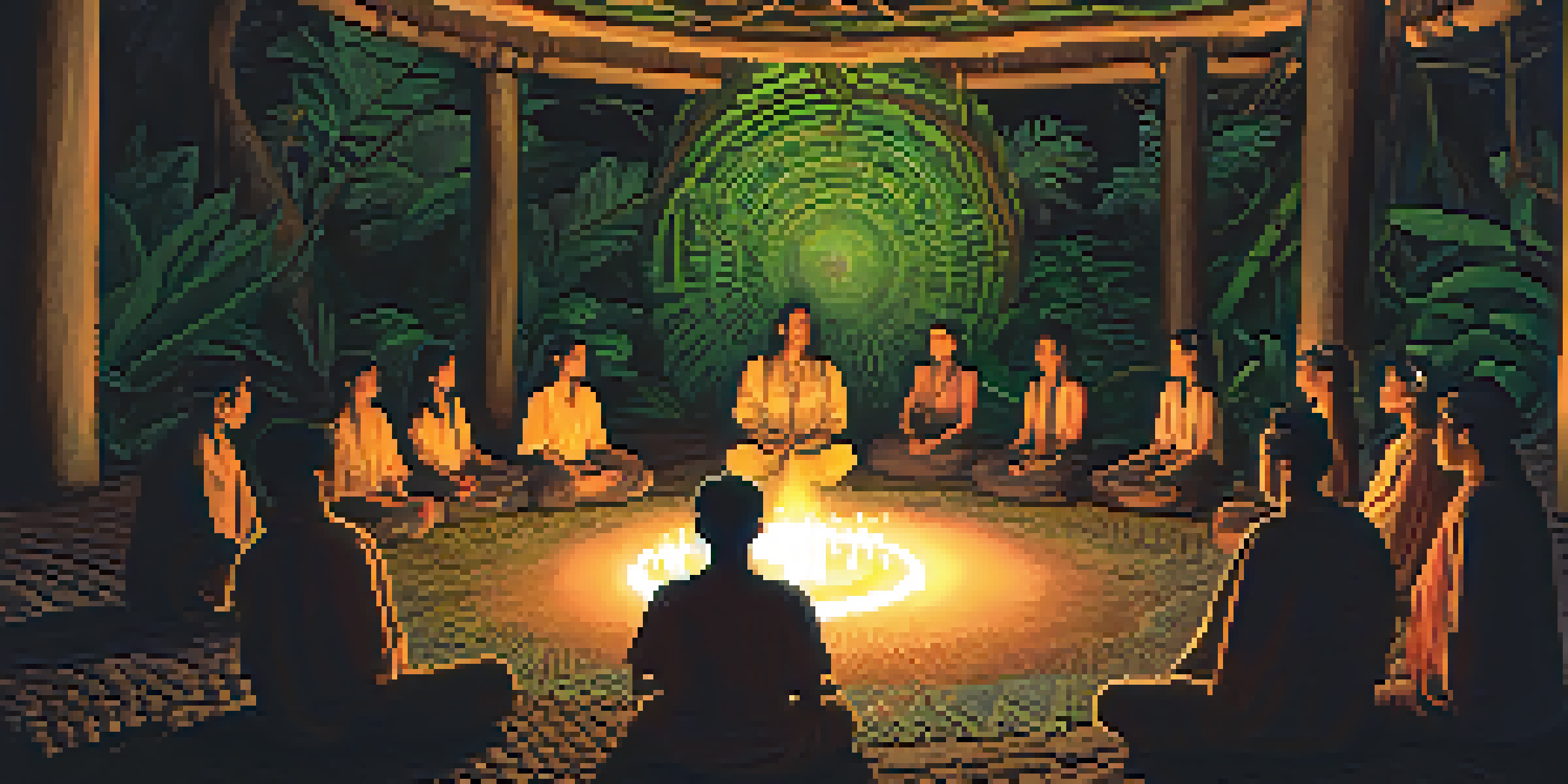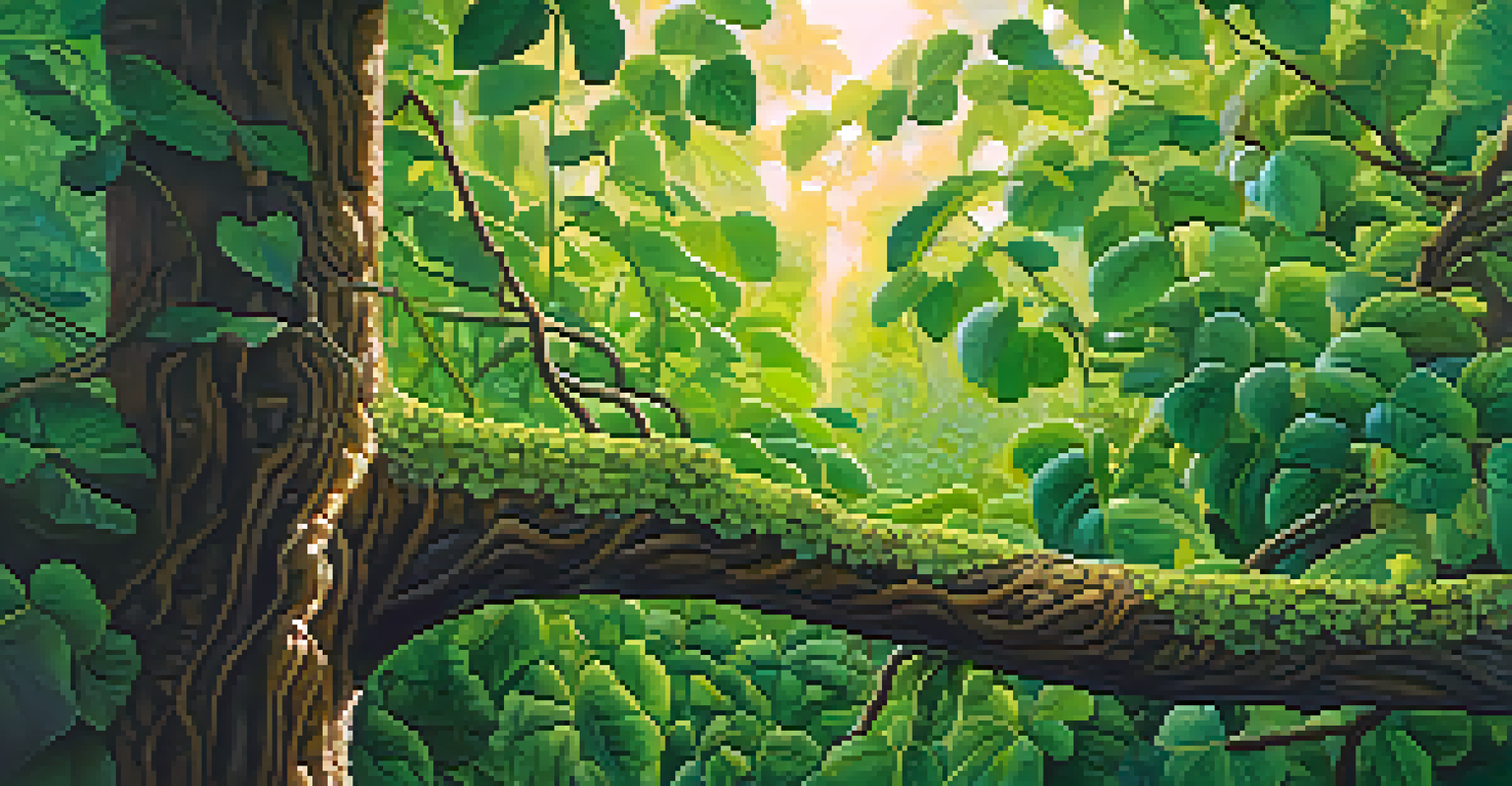Cultural Significance of Ayahuasca in Indigenous Tribes

Understanding Ayahuasca: A Sacred Brew
Ayahuasca is a traditional Amazonian brew made from the Banisteriopsis caapi vine and other plants. This sacred concoction has been used for centuries by indigenous tribes for spiritual and healing purposes. The brew's psychoactive properties facilitate profound introspective journeys, allowing users to connect with their inner selves and the spiritual world.
The greatest discovery of my generation is that human beings can alter their lives by altering their attitudes of mind.
For these tribes, Ayahuasca is not just a substance—it's a vital part of their identity and cultural heritage. The preparation and consumption of Ayahuasca often involve intricate rituals led by experienced shamans. These ceremonies are steeped in tradition, emphasizing respect for nature and ancestral knowledge.
This cultural significance is reflected in the way Ayahuasca is woven into their stories, myths, and daily life. It serves as a bridge between the physical and spiritual realms, fostering a sense of community and continuity among those who partake in the experience.
Ayahuasca Ceremonies: A Communal Experience
Ceremonies around Ayahuasca are communal events that strengthen bonds among participants. Gathered in a circle, often in a dimly lit space, individuals share their intentions and experiences, fostering a sense of trust and openness. These gatherings create a safe environment where participants can confront personal challenges and explore their emotional landscapes.

The role of the shaman during these ceremonies is pivotal. They guide participants through the experience, using songs, chants, and specific rituals to enhance the connection to the spirit world. The shaman's knowledge ensures that the ceremony is both safe and meaningful, as they help navigate any difficult emotions that arise.
Ayahuasca: A Cultural Treasure
Ayahuasca is not just a brew; it's a vital part of indigenous identity and cultural heritage, deeply embedded in rituals and communal experiences.
Moreover, these ceremonies reinforce the values of the community, emphasizing respect, healing, and shared understanding. Through this collective journey, participants experience a deep sense of belonging, which is essential for their cultural identity.
Healing Traditions: Ayahuasca as Medicine
In many indigenous cultures, Ayahuasca is regarded not only as a spiritual tool but also as a form of medicine. The brew is believed to possess healing properties that can address physical ailments, emotional distress, and psychological issues. Many tribes have a deep understanding of the medicinal plants involved, passed down through generations.
Nature does not hurry, yet everything is accomplished.
Healing rituals often incorporate Ayahuasca as a way to restore balance and harmony within individuals. Participants may seek out these ceremonies to address trauma, addiction, or chronic pain, viewing Ayahuasca as a catalyst for transformation. The profound insights gained during the experience can lead to significant changes in behaviors and mindset.
This holistic approach to healing emphasizes the interconnectedness of body, mind, and spirit. For many indigenous tribes, Ayahuasca symbolizes a sacred dialogue with nature, where the wisdom of the earth is harnessed for personal and communal well-being.
Cultural Preservation: Protecting Ayahuasca Traditions
As interest in Ayahuasca grows beyond indigenous communities, there is an urgent need to protect these cultural practices. Many tribes face the risk of cultural appropriation, where their sacred traditions are commodified without understanding their significance. This raises important questions about ownership and respect for indigenous knowledge.
Efforts are underway to ensure that Ayahuasca ceremonies remain rooted in their cultural origins. Indigenous leaders advocate for the recognition of their rights to practice these traditions without outside interference. By emphasizing the importance of respectful engagement, they aim to foster a deeper understanding of their customs.
Healing Through Ayahuasca
Many indigenous cultures view Ayahuasca as a therapeutic tool, addressing emotional and physical ailments while promoting holistic healing.
Cultural preservation is not just about safeguarding traditions; it is also about empowering indigenous communities. By sharing their stories and practices with the world, they seek to educate others about the rich heritage surrounding Ayahuasca, promoting mutual respect and appreciation.
The Role of Nature in Ayahuasca Practices
Nature plays a crucial role in the Ayahuasca experience, as the ingredients are sourced directly from the Amazon rainforest. This deep connection to the environment underscores the tribes' belief in living harmoniously with nature. The act of foraging for plants is often imbued with respect and gratitude for the land.
The rituals surrounding Ayahuasca ceremonies often include offerings to the earth, highlighting the importance of reciprocity. Participants are reminded of their responsibility to protect the environment, reinforcing the idea that healing extends beyond the individual and into the community and ecosystem.
This relationship with nature reflects a broader worldview prevalent in many indigenous cultures, where the health of the land is directly linked to the well-being of its people. In this sense, Ayahuasca serves as a reminder of the delicate balance between humanity and the natural world.
Ayahuasca and Spirituality: A Journey of Self-Discovery
For many individuals, Ayahuasca is a profound vehicle for spiritual exploration and self-discovery. The insights gained during ceremonies can lead to a greater understanding of oneself and one’s place in the universe. Participants often report transformative experiences that inspire personal growth and a reevaluation of life choices.
These spiritual journeys can be deeply personal, with each experience unique to the individual. Participants may confront fears, heal past traumas, or connect with a sense of purpose. This introspective process can illuminate paths toward love, forgiveness, and acceptance, both for oneself and others.
Protecting Cultural Practices
As global interest in Ayahuasca grows, there is a pressing need to safeguard its cultural significance and empower indigenous communities against appropriation.
Ayahuasca acts as a mirror, reflecting the inner struggles and desires that participants may not have fully acknowledged. This journey of self-discovery encourages individuals to embrace authenticity and fosters a deeper connection to their spirituality.
Modern Interest in Ayahuasca: A Global Phenomenon
In recent years, Ayahuasca has gained global attention, attracting individuals seeking alternative healing and spiritual experiences. The growing interest has led to an influx of tourists participating in ceremonies in South America, often led by indigenous shamans. This phenomenon raises questions about cultural authenticity and the motivations of those seeking Ayahuasca.
While some newcomers approach these experiences with respect and curiosity, others may trivialize or misinterpret the sacredness of the rituals. This has sparked discussions within indigenous communities about the importance of educating visitors on the cultural significance of Ayahuasca. Many tribes emphasize that understanding the context is crucial for a meaningful experience.

The modern interest in Ayahuasca also presents opportunities for indigenous communities to share their wisdom and traditions with the world. By engaging with visitors, they can foster cross-cultural dialogue and promote awareness of the challenges they face while celebrating their rich heritage.